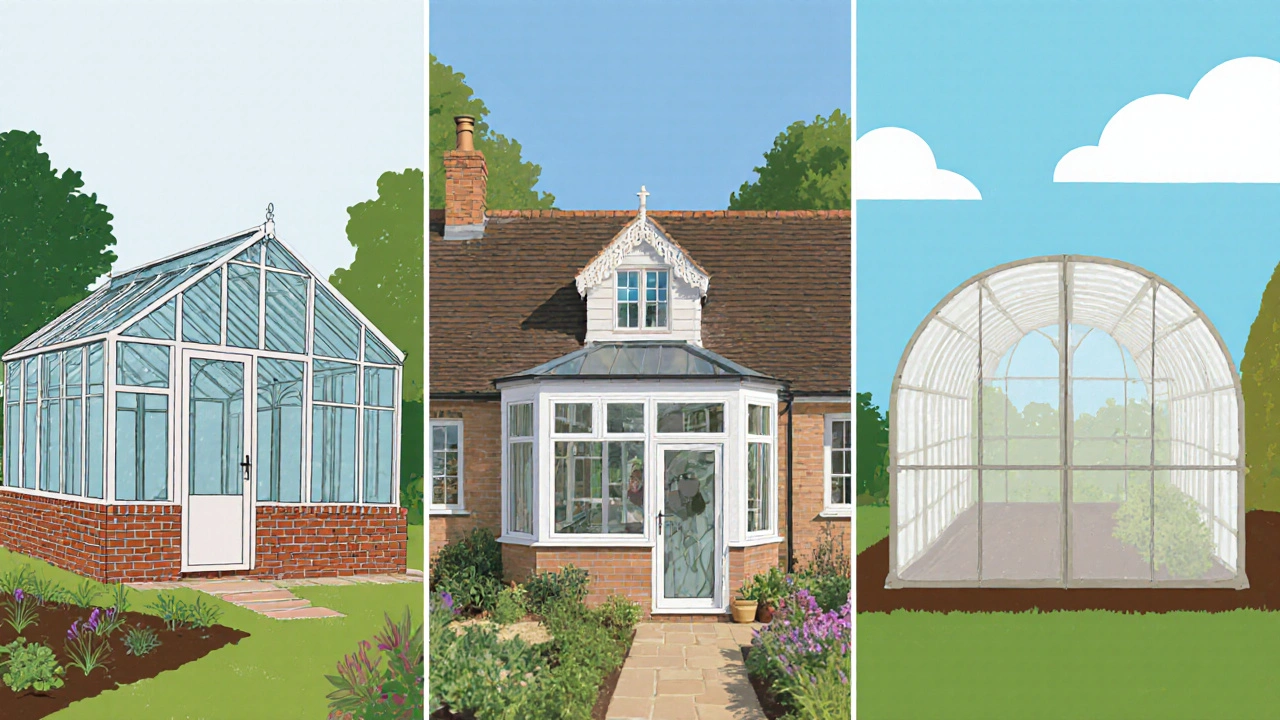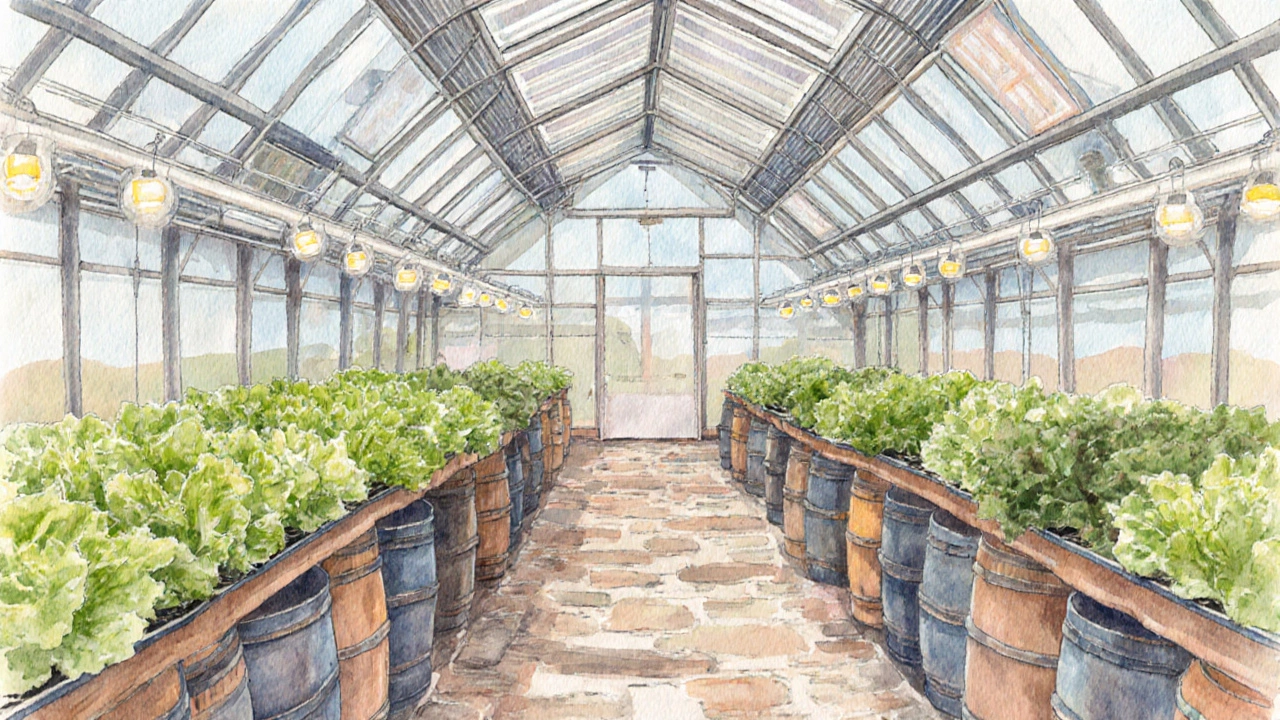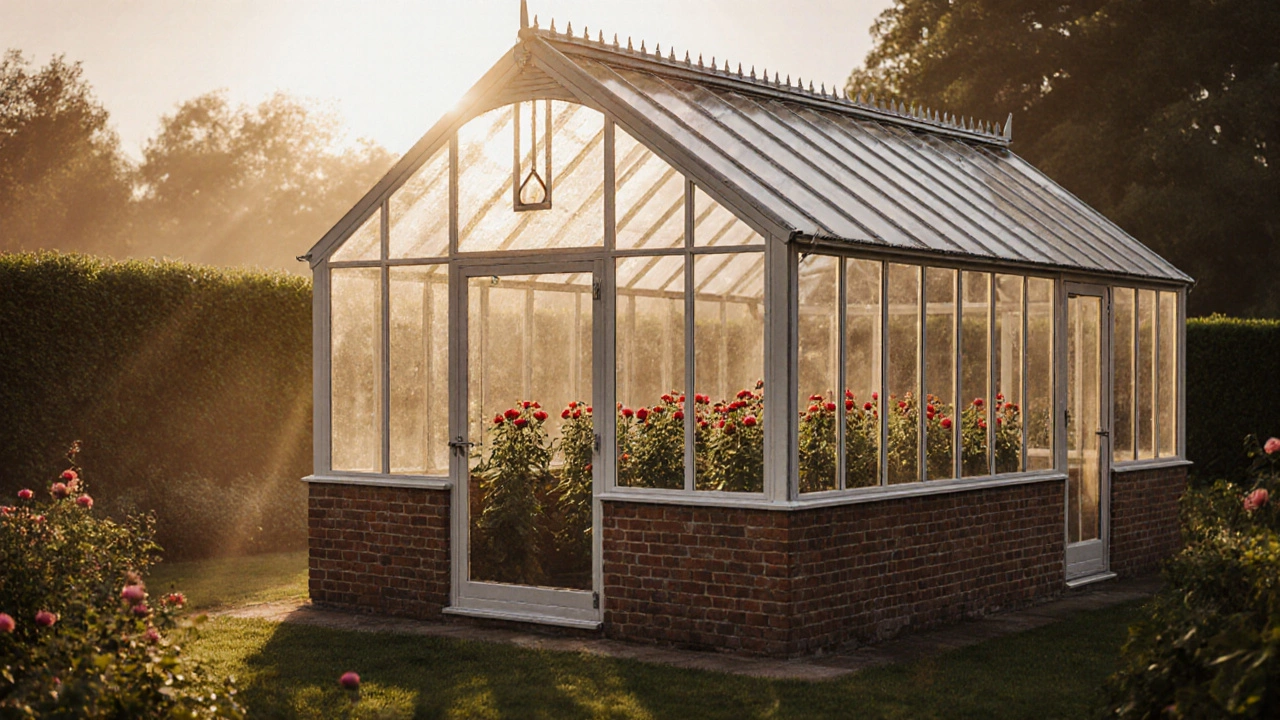UK Garden Structure Finder
Find the right structure for your garden
Answer a few questions to determine which UK garden structure best matches your needs.
Ever wondered why your UK gardening forum keeps talking about a British word greenhouse when you type “greenhouse” into Google? You’re not alone. In the UK the structure you’d call a greenhouse elsewhere often goes by a different name, and the subtle variations matter when you’re buying plans, permits, or tools. Let’s clear up the British terminology, see how it lines up with other garden structures, and give you the practical know‑how to pick the right word (and structure) for your garden.
What a greenhouse really is
Greenhouse is a transparent or semi‑transparent structure designed to create a warm micro‑climate for growing plants year‑round. It usually has a glass, polycarbonate, or polyethylene skin and a metal or wooden frame. Greenhouses trap solar radiation, raising internal temperatures several degrees above the outside air, which extends the growing season for vegetables, fruits, and ornamental plants.
Globally, the term covers everything from hobbyist garden sheds to commercial glass‑enclosed farms. In the UK, however, the word “greenhouse” often collides with a few other historic labels.
The British term: glasshouse
Glasshouse is a large, predominantly glass‑walled building used for cultivating plants, especially in the UK and parts of Europe. The word dates back to the 16th century when aristocrats first imported exotic species and needed a fully glazed space to protect them.
Modern British gardeners still use “glasshouse” when they want to emphasize a solid, often brick‑based structure with extensive glazing. If you search UK gardening forums, you’ll find “glasshouse” and “greenhouse” used interchangeably, but “glasshouse” tends to imply a more permanent, professional‑grade installation.
Other garden structures you might hear about
While “glasshouse” is the closest British equivalent, the UK also uses a handful of related terms that each serve a slightly different purpose.
- Conservatory is a room attached to a house, primarily for leisure, with large windows and often a roof of glass or polycarbonate. It’s designed for human comfort as much as for plant growth.
- Cold frame is a low, transparent box placed on the ground to protect seedlings from frost. It usually has a hinged lid and sits directly on the soil.
- Polytunnel is a arched tunnel made of polyethylene film, offering a cheap, flexible alternative to glass structures. It’s popular for seasonal crops.
- Horticulture is the science and art of garden cultivation, encompassing greenhouse and glasshouse practices.
Glasshouse vs. Conservatory vs. Polytunnel: a quick comparison
| Feature | Glasshouse | Conservatory | Polytunnel |
|---|---|---|---|
| Primary purpose | Plant production year‑round | Leisure space with optional plant use | Seasonal crop protection |
| Typical glazing | Glass or double‑glazed polycarbonate | Large glass panes, sometimes acrylic | Single‑layer polyethylene film |
| Structure size | From 2 m × 3 m up to 30 m + | Usually < 5 m wide, attached to house | Varies, but often 6‑15 m long |
| Insulation | High (glass, double glazing) | Moderate - often single glazed | Low - relies on film heat retention |
| Planning permission (UK) | Often required if > 15 m² or attached | Usually required if extending outside footprint | Rarely needed, but check local rules |
Why the terminology matters for UK gardeners
When you browse UK suppliers or search for “glasshouse kits”, you’ll see product listings that mention compliance with UK building regulations (specifically Part L for thermal efficiency and Part M for accessibility). A “greenhouse” advertised in the United States might skip those standards, leading to unexpected heat loss.
Getting the term right also saves you time on forums. If you post “I need advice on my greenhouse” in a British community, you might get replies suggesting “glasshouse kits” or “polytunnel alternatives”, because members assume you mean the UK‑style structure.

Choosing the right word for your project
- Identify the primary use. If you want a dedicated plant‑production space, think “glasshouse”. If you’re adding a sunroom to your home, “conservatory” is the go‑to term.
- Consider permanence. A brick‑based, fully glazed building aligns with “glasshouse”. A portable polyethylene cover matches “polytunnel”.
- Check local planning rules. The Planning Portal defines thresholds: structures over 15 m² that are attached to a house usually need permission. Use the correct term when filling out forms.
- Search wisely. Combine the British term with your needs: “glasshouse heating system”, “polytunnel ventilation”, “conservatory insulation”.
Following these steps helps you find the right suppliers, advice, and legal guidance without wading through a sea of mismatched terminology.
Practical tips for building a British‑style glasshouse
- Frame material. Steel or aluminium offers strength with minimal rust in coastal areas like Brighton. Wooden frames add charm but need regular treatment.
- Glazing choice. Double‑glazed glass provides the best thermal mass, keeping heat steady overnight. Polycarbonate panels are lighter and shatter‑resistant, a good middle ground.
- Thermal mass. Adding a stone floor or water barrels absorbs daytime heat and releases it at night, a technique rooted in traditional UK glasshouse design.
- Ventilation. Roof vents, side louvres, and automated fans prevent overheating during the British summer sun. A well‑ventilated glasshouse can maintain temperatures 5‑10 °C higher than the outside without extra heating.
- Heating. For year‑round use, consider a low‑output oil or LPG boiler linked to under‑floor heating. Modern electric heat pumps are gaining popularity for their efficiency.
- Lighting. Supplement natural light with LED grow lights positioned 30 cm above the plant canopy, especially in the darker winter months.
These features reflect the blend of tradition and technology that characterises British glasshouses today.
Common misconceptions cleared
“A glasshouse is just a fancy greenhouse.” Not quite - while the functions overlap, “glasshouse” in the UK often implies a sturdier, more permanent structure, frequently subject to building regulations.
“Conservatories are the same as glasshouses.” No. Conservatories prioritize human comfort, often have larger doors, and are usually attached to a home. Their heating needs differ, and they may not be suitable for commercial plant production.
“Cold frames are miniature greenhouses.” They’re similar but tiny, ground‑level boxes designed for seed starting and hardening off seedlings, not for full‑size vegetable production.
Finding resources using the British term
When you type “glasshouse kit” into a UK search engine, you’ll land on suppliers like Jungle Garden or Grange Garden Supplies, which list products that meet UK building regulations. Adding “DIY plans” yields free PDFs from horticultural colleges, while “glasshouse heating” pulls specialist forums where gardeners discuss oil‑filled radiators versus modern heat pumps.
Remember to include the word “glasshouse” when you’re hunting for UK‑specific advice, permits, or kits - it’s the shortcut most locals use.

Is a glasshouse the same as a greenhouse in the UK?
They serve the same basic purpose-providing a warm space for plants-but "glasshouse" usually refers to a more permanent, fully glazed building that complies with UK building regulations, whereas "greenhouse" can be any size or material, including portable polytunnels.
Do I need planning permission for a glasshouse?
If the structure is larger than 15 m² or is attached to your house, most local councils require planning permission. Freestanding, small sheds under that size often qualify for permitted development.
What’s the difference between a conservatory and a glasshouse?
A conservatory is built mainly for human enjoyment and may have larger windows, heated floors, and decorative features. A glasshouse is optimized for plant growth, emphasizing temperature control and light transmission.
Can I use a polytunnel instead of a glasshouse?
For seasonal crops and low‑budget projects, a polytunnel works well. However, it offers less insulation, so you’ll need extra heat in winter and may not support delicate plants that need stable temperatures.
What glazing gives the best heat retention?
Double‑glazed glass or twin‑wall polycarbonate provide the best thermal mass and insulation, keeping heat in overnight while still letting plenty of light through.
